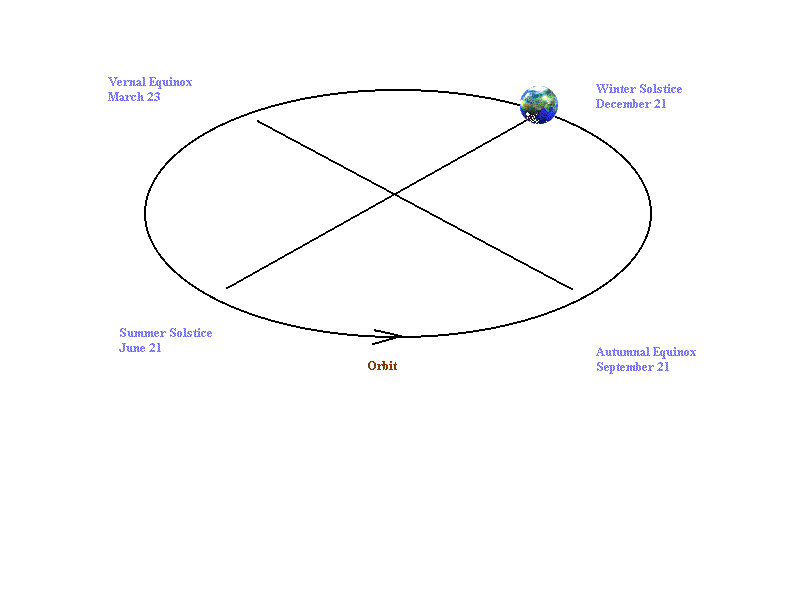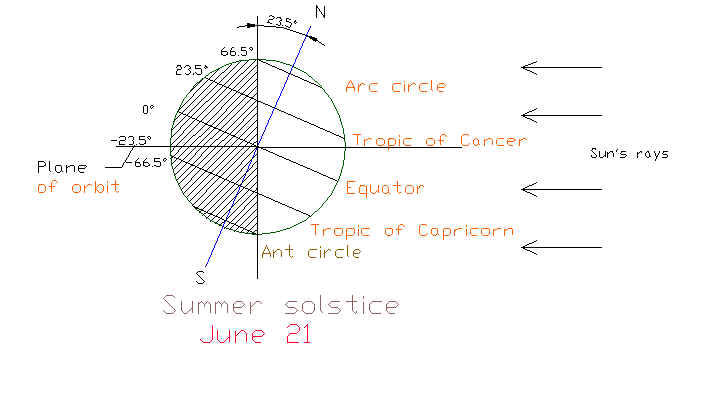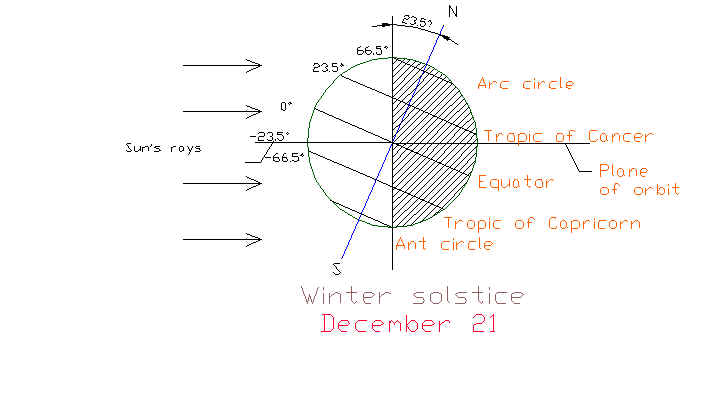Last update:00-04-24


The earth moves about the sun in an elliptic orbit, completing one revolution per year
(=365.25 days). In addition, the earth rotates about its polar axis once per day.
The polar axis is inclined at an angle of 23.45o from the normal of the plane
of the
orbit (=ecliptic), as shown in Fig. 2. These rotations and the inclination between the
polar axis and the ecliptic are responsible for the day-night cycle and the seasons.

Fig. 2 (a)

Fig. 2 (b)

Fig. 2 (b)
Figure 2 Geometry of the earth's
orbit and inclination of polar axis (a) Entire orbit
Enlarged detail, solstices
Figure 2 shows a section through the sun, the ecliptic plane and the earth in two
directions; one represents the equinoxes (March 21 and September 21) and the
other two solstices (June 21 and December 21). The angle between the earth-sun
line and the earth's equatorial plane is known as the angle of declination.
Shadings and Overhangs
![]()